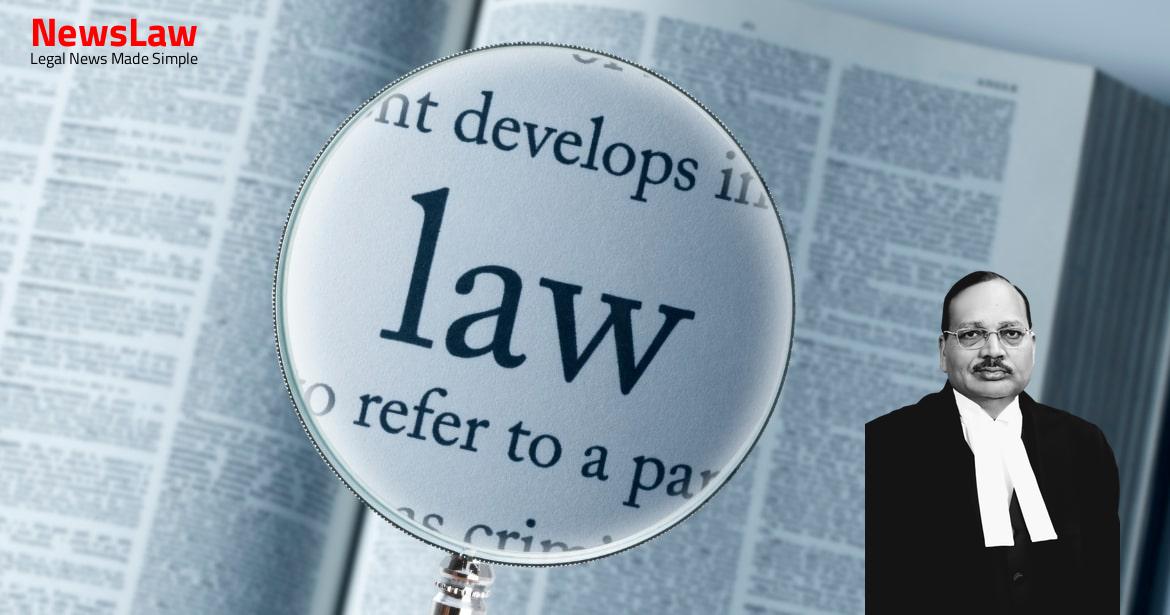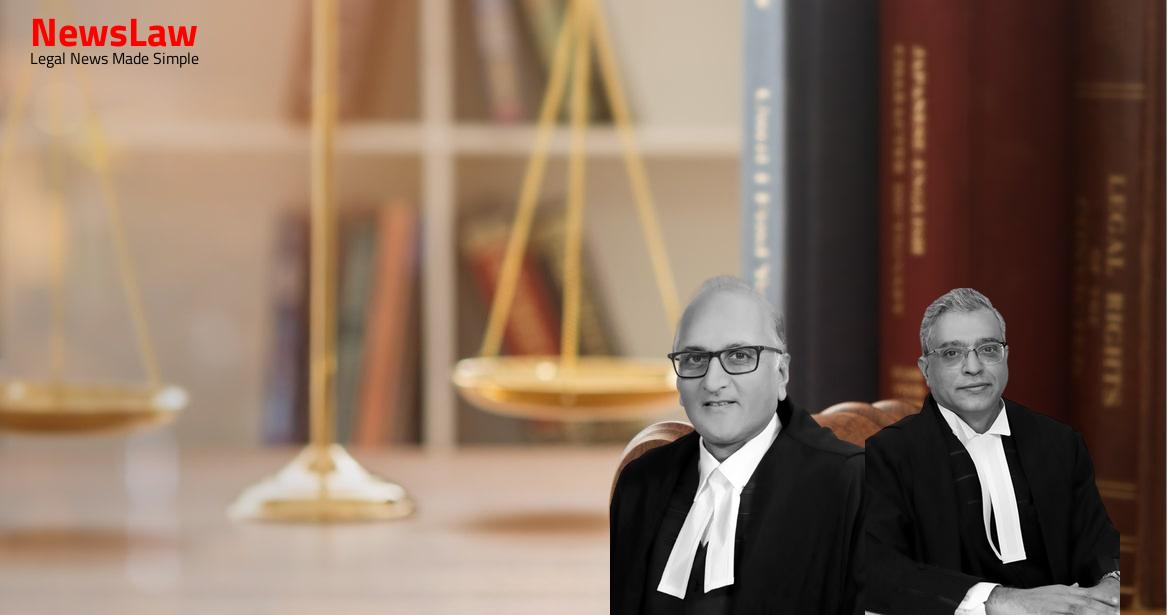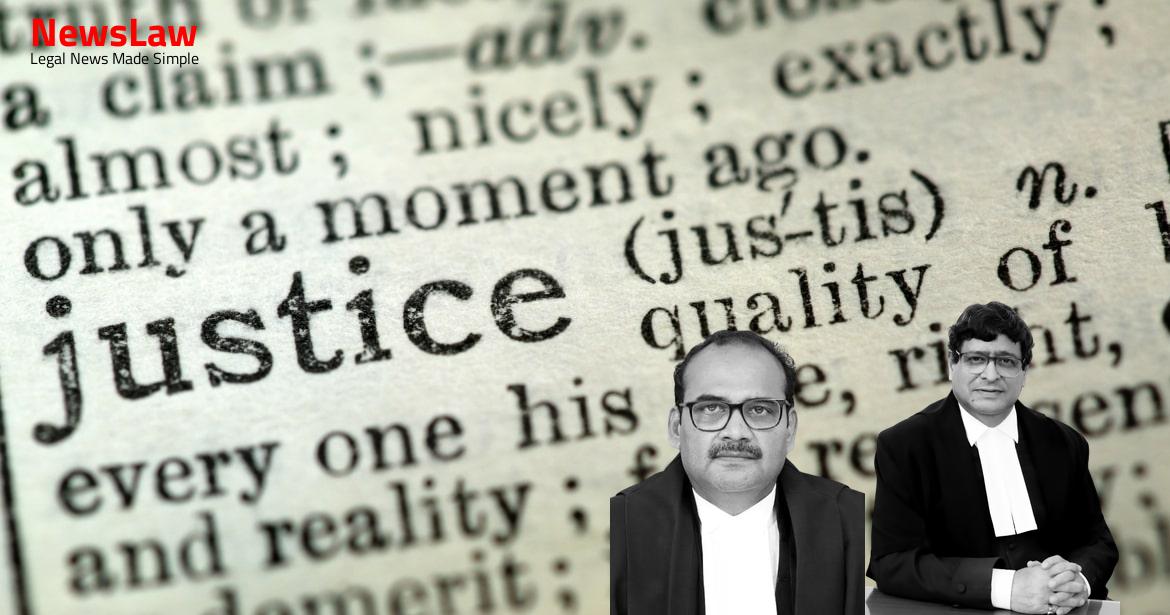In a significant development, the Supreme Court of India has issued its judgement in the Trivedi Murder Case, upholding the convictions of the appellants. The case revolves around the tragic death of Kamlesh Kumari Trivedi, with the appellants being sentenced to life imprisonment and a fine. The High Court of Judicature at Bombay, Nagpur Bench also affirmed the lower court’s decision. This case has captured national attention due to the heinous nature of the crime and the legal proceedings that followed.
Facts
- The Sessions Judge, Nagpur convicted the appellants under Section 302 read with Section 34 of the Indian Penal Code.
- The appellants were sentenced to life imprisonment and a fine of Rs.1500 each for the aforementioned conviction.
- They were further convicted under Section 392 read with Section 34, I.P.C. and sentenced to Rigorous Imprisonment for three years.
- The High Court of Judicature at Bombay, Nagpur Bench upheld the conviction and sentence of the appellants.
- Deceased Kamlesh Kumari Trivedi was found dead in her house with signs of strangulation.
- Appellants were apprehended near Gupta Hotel in village Hingna based on information provided by neighbors.
- Charges under Sections 302, 392/34, I.P.C. were framed against the appellants.
- Appellants pleaded not guilty and claimed trial, denying their involvement and stating they were made scapegoats by the police.
- Trial Court established the guilt of the appellants based on circumstantial evidence and sentenced them.
- High Court upheld the Trial Court’s decision after re-evaluating the evidence.
- Appellants argued that no Identification Test Parade was conducted to establish their presence at the crime scene.
- Purnima Trivedi found her grandmother dead upon returning from college.
- A total of eleven witnesses were examined by the prosecution to establish the charges.
- Crime No 246/2001 under Section 302, 392/34 was registered.
- Neighbors Raisaheb Chourasiya and Baliram Fulari were informed about the incident by Purnima Trivedi.
- Witnesses observed two young boys on a red motorcycle near the apartment building on the day of the incident.
- Onida T.V. set was found missing from the drawing room of the deceased.
Also Read: The Ganga Ghat Murder Case: Upholding Accountability in Unlawful Assemblies
Arguments
- Raisaheb Chourasiya’s testimony was challenged due to appellants’ age discrepancy with the description of the alleged perpetrators.
- Appellants were argued to be in their 30s, while the suspects were reported to be young boys of 20-25 entering the premises.
- No confrontation of appellants with the alleged stolen items for identification was highlighted.
- Panch witnesses of alleged recovery turned hostile, casting doubt on the validity of the recovery.
- State counsel argues that the case against the appellants is proven.
- The State contends that the Court should not re-evaluate the concurrent findings of the lower courts.
- It is claimed that crucial links in the chain of circumstantial evidence are missing to connect the appellants to the crime.
- The prosecution has not proven its case beyond a reasonable doubt.
Also Read: Speedy Trial Rights Upheld: Bail Granted in X vs. State of India
Analysis
- Multiple witnesses corroborate the version of Raisaheb Chourasiya
- The two appellants were seen in plain attire with mufflers covering their faces
- The stolen items were recovered from the first appellant’s house
- The witnesses saw the appellants enter the Rajnigandha Apartments
- No suggestions of false identification were raised in the cross-examination
- The appellants failed to provide any explanation for their presence
- The identification parade is corroborative in nature, not substantive evidence
- The presence of appellants at the scene was not denied in cross-examination
- The witness Raisaheb Chourasiya identified the appellants in court
- Purnima Trivedi identified the appellants as well
- No suggestion of animosity between Raisaheb Chourasyia and the appellants
- The police promptly apprehended the suspects based on descriptions provided
- The recovery of stolen items was pursuant to disclosure statements made by appellants
- The prosecution establishes a complete chain of events linking the appellants to the crime
- P.W.9 (Raisaheb Chourasyia) is a trustworthy witness.
- The identification of the accused individuals by P.W.9 is reliable.
- P.W.9’s testimony is consistent and reliable throughout the proceedings.
- Multiple factors contribute to the credibility of P.W.9’s statements.
- Courts below concluded that only the appellants entered the victim’s apartment and committed her murder with the intent to rob.
- No factual or legal inconsistencies were found in the findings of the lower Courts.
- No interference by the Court is warranted in this case.
Also Read: Rizvi Committee Pay Scale Judgment: Upholding Justice and Equity
Decision
- The Appeal is dismissed
- Original names were used instead of generic titles like Respondent No 1 or Petitioner No 1
Case Title: RAMESH DASU CHAUHAN Vs. THE STATE OF MAHARASHTRA
Case Number: Crl.A. No.-001682-001682 / 2012



